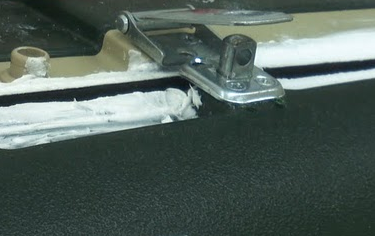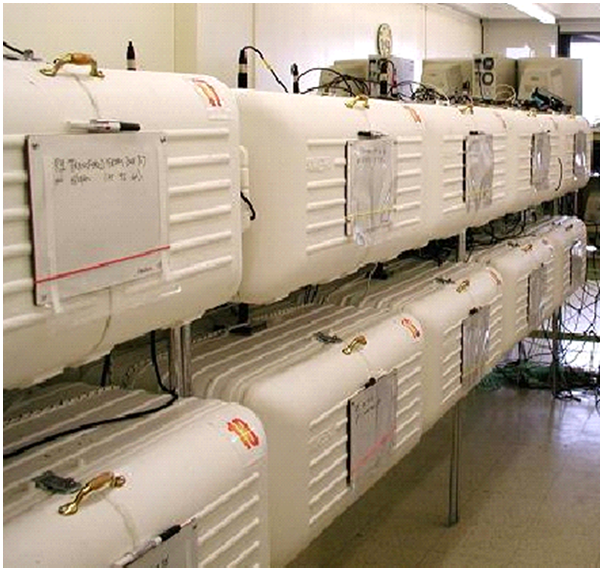Hardware Installation: Building Sound Attenuation Boxes
| < PREVIOUS: Chapter 2 | > NEXT: Hardware Installation - Sound hardware |
|
|
|
|
Building your own sound boxes is easy and will save you thousands of dollars. The sound isolation quality will depend on the thickness of the foam used, and on the accuracy of application, but in general, it should be easy to achieve at least 30dB of attenuation, which would usually prevent sound leakage from one box to the next as long as both doors are closed. In zebra finches, we did not detect any penetration of bird vocalization sounds across boxes (as long as both boxes are closed and airflow is intact). |
|
  |
|
|
Coolers: There are many brand names (cost is bout $40-$60 per box). There are certain differences in the quality of hinges and ease of handling. We used Thermos 110 qt Coolers (Outside: 34 x 16 x 17; Inside: 32 x 14 x 15). It is very likely that you will have to replace the hinges after a few years of usage. Sound isolation foam: The material cost is about $50 per box. We recommend SOUNDFOAM "M" from http://www.soundcoat.com/absorption.htm:
which is an acoustic quality, open cell, flexible polyether based urethane foam designed specifically to provide maximum sound absorption in minimum thickness. It is characterized by outstanding humidity resistance, excellent chemical resistance, fine and uniform cell size and consistent sound absorption. It is available plain, embossed, or with decorative and protective surface finishes of aluminized polyester film, Tedlar, and matte urethane film. Soundfoam "M" is supplied with one of several high performance pressure sensitive adhesives in “ready to use custom die-cut parts. Glazed ¾ and ½ “: thick for the sides and front lead:Use silicon glue to suture the joints between sheets (you will need glue gun and silicon glue tubes). |
|
|
Latching: Remove the original latches from the cooler and replace them by metal locks. We use Stanley LifeSpan USA+ from Home Depot. Cages: 18 x 9 x 10 Previw-Hendrix Model DB (Breeding small cages with a split, which is not used for our application). * comment: those cages are now difficult to find, and most commercially available cages are too large. We now custom build cages of the appropriate size for our experiments. Lights: We recommend these LED lights from Ikea. Each fixture include 4 strips (can supply 4 boxes), power supply is included. Overall cost is around $5 per cage. The glue might not suffice to hold the light in place for long time. It is advised to fix it using plastic bands that are secured to the ceiling of the box. |
|
|
Air supply: The airflow system should be centralized. We use 100W or 120W aquarium air pump model #LPH120. http://www.Jehmco.com http:\\www.jehmco.com\products_\hardware_\central_air_pumps\ This should suffice for 20 boxes or so. These pumps are very quiet since they are surrounded by a ‘sound box’. You can choose between a few different capacities. The highest one (xxx Amp) should suffice for 20 training boxes, whereas the smaller ones () can support 10 or 15 boxes. Airline tubing: We use 50 feet long small diameter tubing such these 3/8" clear tubing: http://www.zoro.com/i/G4162916 Keep all tubes the same length -- we recommend use the entire 50' for each box. This will provide good damping of pump noises. . ;;
Racks: You may use any comfortable shelving solution, and get the coolers fixed (e.g., by bungee cords or by screws). |
|





